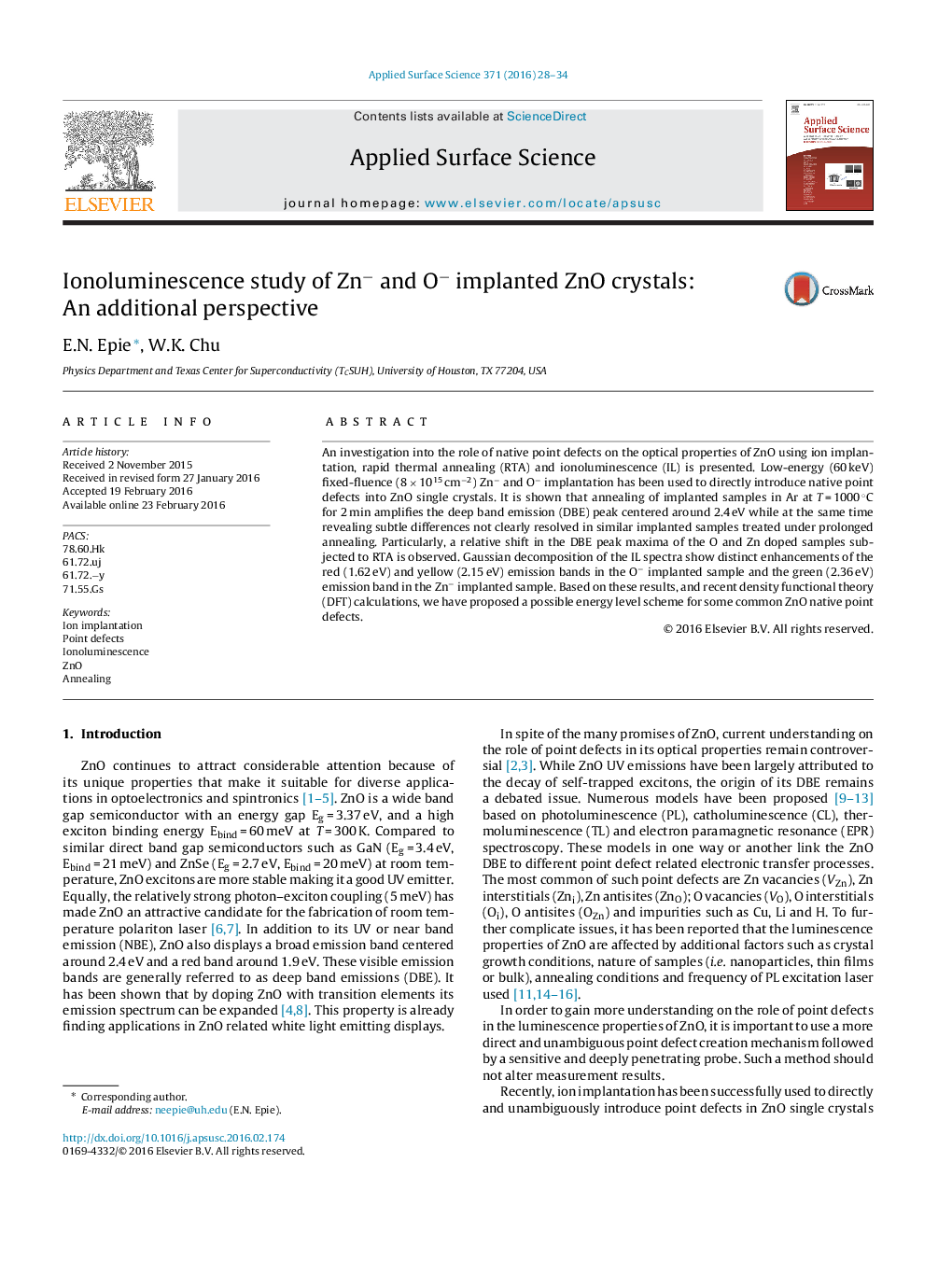| Article ID | Journal | Published Year | Pages | File Type |
|---|---|---|---|---|
| 5354530 | Applied Surface Science | 2016 | 7 Pages |
Abstract
An investigation into the role of native point defects on the optical properties of ZnO using ion implantation, rapid thermal annealing (RTA) and ionoluminescence (IL) is presented. Low-energy (60 keV) fixed-fluence (8 Ã 1015 cmâ2) Znâ and Oâ implantation has been used to directly introduce native point defects into ZnO single crystals. It is shown that annealing of implanted samples in Ar at T = 1000 °C for 2 min amplifies the deep band emission (DBE) peak centered around 2.4 eV while at the same time revealing subtle differences not clearly resolved in similar implanted samples treated under prolonged annealing. Particularly, a relative shift in the DBE peak maxima of the O and Zn doped samples subjected to RTA is observed. Gaussian decomposition of the IL spectra show distinct enhancements of the red (1.62 eV) and yellow (2.15 eV) emission bands in the Oâ implanted sample and the green (2.36 eV) emission band in the Znâ implanted sample. Based on these results, and recent density functional theory (DFT) calculations, we have proposed a possible energy level scheme for some common ZnO native point defects.
Related Topics
Physical Sciences and Engineering
Chemistry
Physical and Theoretical Chemistry
Authors
E.N. Epie, W.K. Chu,
